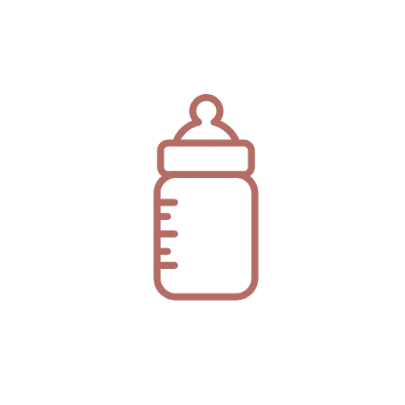Weaning a breast-fed baby is without a doubt the ‘end of an era’, so the decision to wean should certainly come with some thought into what this means for you and your baby. It is important to be sure of your reasons for weaning, that you have correct information about changes in breastfeeding as your baby grows, that sometimes those changes are not necessarily a desire from the baby to stop breastfeeding.
Weaning can come in two ways: baby-led, when the baby naturally with age and development slows down or stops breastfeeding; or mother-led weaning, this is where the decision comes solely from the mothers desire to wean.
If you have made the decision to wean then it is important to go slowly,dropping just one breastfeed per week. This will reduce the likelihood of discomfort from full breasts and allow your little one to get used to the new way of doing things. Use distraction, a toy, going for a walk, reading a story, going with the idea of ‘don’t offer but don’t refuse’.
This will enable your little one to slowly get use to the changes in breastfeeding, which for some can be a huge transition. Having snacks handy when you are out and about, drinks ready to go and trying to stay one step ahead, is a useful ‘tool’ in the weaning process. Having these things ready when you think a breastfeed maybe wanted.
Often the early morning and evening (and nap times too) are the last breastfeeds to go, these are about routine and expectations that your little ones have, so introducing a new ‘routine’ for the morning and evening will help the transition from feeding. Getting up a few minutes earlier than your little one to prepare breakfast, have it ready to go, a drink in a sippa cup. This will help to eliminate the opportunity to arise for you to have to resort to refusing.
With toddlers and older children postponing or holding off the breastfeed can help, using language that they understand ‘not now, later or soon’ and then using distraction. They will often get engrossed in the new task or game and forget about the breastfeed they were wanting! Watch for those times of tiredness when you are out, try not to ‘over-extend’ your little one (no matter how old they are) when you are working through the weaning process.
Breastfeeding for a baby or child is more than just about nutrition, it is absolutely about closeness with their mothers, about skin to skin contact, it’s about cuddling and nuturing. It is important to remember through the weaning process that your child might have difficulties adjusting to the lack of skin to skin and close physical contact with you.
Offering lots of cuddles and ‘mummy time’, a massage or a rub may take the place of a breastfeed. Getting dads involved also in the bedtime rituals may help with the dropping of those nap and night time feeds.
Remembering to take it slowly.
Weaning can bring in a whole new set of emotions for mothers also. The change in the amount of skin to skin with her baby, the drop in those hormones produced with breastfeeding, can unsettle mothers and they can certainly ‘grieve’ the loss of this special time with their child. For those mothers, it is about more cuddling, skin to skin, bathing and showering together, promoting and encouraging that closeness, it’s now just in a different way! Like any new change or experience, it can take time for you and your child to get used to the ‘new’ way of doing things
An expert contribution from our team member Simone








